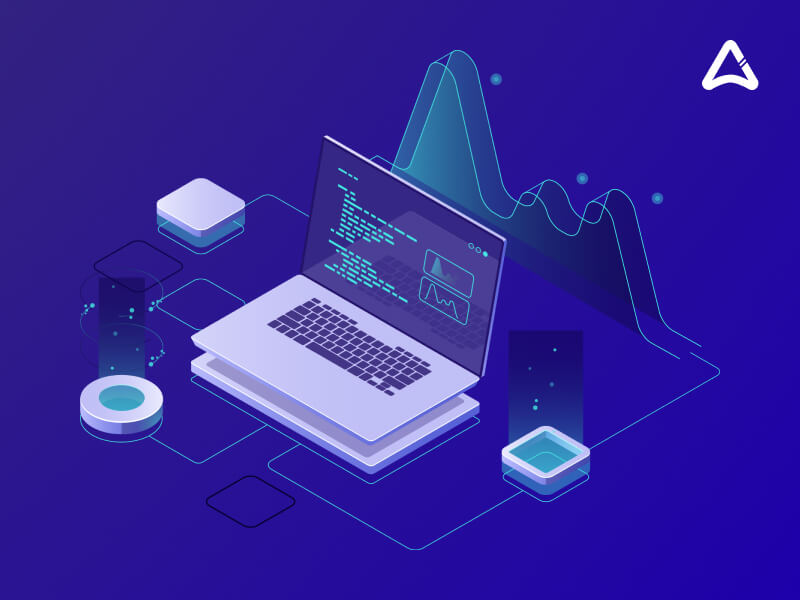You might have come across the term API several times, especially when hiring app developers for building mobile or web apps. But have you ever given a thought about what an API development is? Well, you should.
Developing an API improves the performance, functionality, and user experience of an app, irrespective of the operating system or device it has been made for.
You must have knowledge about the meaning of API, best practices of API, and the API development cost because these details come in handy when building an application.
If you are new to the app development world but are planning to create an application for your business, this blog post will help you know about a key aspect of mobile and web apps – API.
What is API, and why is it Important?
API stands for Application Programming Interface; it is nothing but a set of instructions, requirements, and standards that enable an app or software to employ features or services of some other application or platform in order to offer better services. Basically, it helps applications communicate efficiently.
In technical terms, API provides a set of programming codes that allows data transmission between one software product with the other. Let’s take an example, when you hit the ‘Connect Facebook‘ button on any app, you don’t need login credentials.
API is the base of all apps in the development process that enables the communication between two products or services. It empowers a mobile application or platform to share its data with other apps/platforms and ease the user experience without involving the developers. Apart from this, API also eliminates the need to build a similar program or platform from scratch. Thanks to these factors, both app developers and companies focus more on the API development process.
Types of API
In terms of release policies, there are three categories of APIs – private, partner, public, and composite.
Private APIs
A private API is designed to improve services & solutions within the organization. In this scenario, the app’s interface remains available only for those working with the API publisher, even if the app is publicly available. Incorporating this strategy, companies can take full control of API usage.
Partner APIs
Partner API’s are used for software integration between two parties. In simple words, this API openly promotes and shares the integration process among the business partners. Partner APIs also help in digital asset monitoring, their use, and corporate identity maintenance.
Public APIs
It is also referred to as external or developer-facing. It is available for third-party developers and helps in increasing brand awareness. Apart from this, Public APIs also allow you to receive extra income if properly executed.
Composite API
Composite APIs are known for combining different service and data APIs. It helps in combining existing API functions, which can perform many tasks in a single call. This API is critically important to boost the execution speed along with enhancing the performance of the application.
How Does it Work?
To further understand the working of API, let’s take an example. If you open any website or app to book a flight ticket, you start by filling the form by entering all the details such as departure, return date, flight, city, etc. So, as soon as you submit, a list of flights will appear with details like seat availability, timings, price, and more. But how did it happen? It’s because of the APIs.
API helps in acquiring accurate data. The platform sends the request to the website to access the database and get all the relevant data through API; the website then responds with the data delivered via API to the platform.
So, in simple terms, API acts as an intermediate that streamlines the data sharing process.
Now that we have an idea about the working of APIs let’s look at the basic terminologies used in API development.
Terminologies Associated with API Development
Anyone who is looking for custom API development should be well aware of these terminologies.
API Key: In Technical terms API Key is a unique code used for authenticating a user, developer, or calling program.
Endpoint: This refers to the Interaction touchpoints between the API and the server.
JSON: JSON (JavaScript Object Notion is a data format) is a data format that allows APIs to interchange data. With the help of JSON, interchanging of data can occur between a web application and a server or two applications.
GET: The requesting of data from the server at a specified resource takes place with the help of GET method.
POST: It is a method that developers use for sending data to the API server in order to update or create a resource.
OAuth: It is an open-standard authorization framework for APIs. It allows secure and restricted access to the end-users data. Application or third-party websites use this data without accessing their password.
Latency: Latency is the amount of time taken by the API to process a request and response.
Rate-Limiting: Rate-limiting is the process of controlling the rate of incoming and outgoing traffic.
API Throttling: It is a process of controlling API requests for a specific period of time.
Best Tools for REST API Development
There are many tools available in the market to ease the process of developing API. Here are some of the popular REST API development tools for developers to look out for:
Apigee: It is an API management provider by Google that enables developers to triumph at digital transformation by re-establishing their approach towards creating API.
APIMatic and API Transformer: These are the most adapted and popular tools for API development. They offer excellent tools for an automatic generation to build top-quality SDKs and code snippets from API-specific formats and transform them into other specification formations, such as RAML, API Blueprint, etc.
API Science: It is one of the best REST development tools for API to evaluate the performance of both internal APIs and external APIs.
API Serverless Architecture: These products allow developers to design, build, publish and host APIs by incorporating cloud-based server infrastructure.
API-Platform: It is an open-source PHP framework that is used for web API development.
Auth: It is the best identity management solution used to authenticate and authorize APIs.
ClearBlade: If you want to embrace IoT technology in your business processes, this is the best option.
GitHub: It is an open-source git repository hosting service that enables developers to manage code files, pull requests, control version, and comments that are distributed across the group.
Postman: This tool empowers developers to run, test, document, and evaluate the performance of their API.
Swagger: This one is another open-source framework that is used for developing APIs. Big technology giants including Getty Images and Microsoft, use Swagger. The mobile development service providers are all wildly employing the API; there is still a major gap in utilizing the perks of API.
Important Features in API Design
Now that we know what an API is and its importance in application development, there are still some points to keep in mind while developing an API. These points will act as a catalyst in your development process. Let us look at these points:
Authorization and Authentication: Verify the right identity and decide if the verified user can act on a specific source.
Pagination: Creating pagination helps in observing the resources that take longer time than usual in retrieving. This process determines how much data should be displayed and at what frequency.
Cache: Developing a Cache strategy helps in retrieving resources at lightning speed.
Wrappers: API wrappers are containers or packages which combine various sets of API calls into user-friendly functions.
Error Handling: Efficient error handling makes the debugging process easier as it identifies the problem quickly.
Validation: This refers to the verification of the correctness of data.
Testing: API testing is very similar to software testing. It includes testing the APIs directly and determining whether it meets the expectations for performance, functionality, security, and reliability.
Best Practices for API Development
Above, we looked at the important features and the best API development tools, but it will all go in vain if you don’t follow the correct API building practices. So here are some best practices for perfect API development.
Throttling: It is one of the best API practices for redirecting the overflow of traffic, safeguarding from DoS (Denial of Service), and backup APIs.
Enable Overriding HTTP Method: Some proxies only support POST and GET methods; therefore, you must allow your REST API to override the HTTP method. Employing HTTP Header X-HTTP-Method-Override eases the process. It is one of the best practices of REST API.
SDK and Libraries: This is an important resource to the development team to boost the speed of services by offering resources that contain reusable processes and code.
Security: Ensuring the security of API is essential, but not at the cost of user-friendliness. Utilizing token-based authentication will make your API secure.
Documentation: Having a wide range of documentation is one of the API development best practices that you must consider. Creating extensive documentation for an API will further help developers to understand the entire process in detail.
Conclusion:
It is safe to say that the significance of API has grown dynamically. It enhances business profits efficiently, and the API development cost is not as one thinks. If you consider integrating the best API dev tools and adapt the REST API development best practices, you can also build the required API for your business.
If you are looking for a mobile application development company that can help in developing APIs and offers the best practices in REST API, choose AppStudio. Our development team consists of dedicated app developers who are reputed to develop top-notch APIs.
FAQs
How long does it take to code an API?
It depends on the complexity of the project and the features incorporation, while developing an API we go through a number of standard phases like research, prototype, build an MVP, transaction management, deployment, monitoring and documentation.
How much does it cost to develop an API?
It is difficult to give away an exact cost, building an API is relatively simple, however the cost depends on the number of services you opt for, as per your business requirement. Contact us today to get a quote!
When should I create an API?
It is always recommended to build an API in the beginning, this way you will have a well architected web app that consists of a data layer, a logic layer and a presentation layer.






